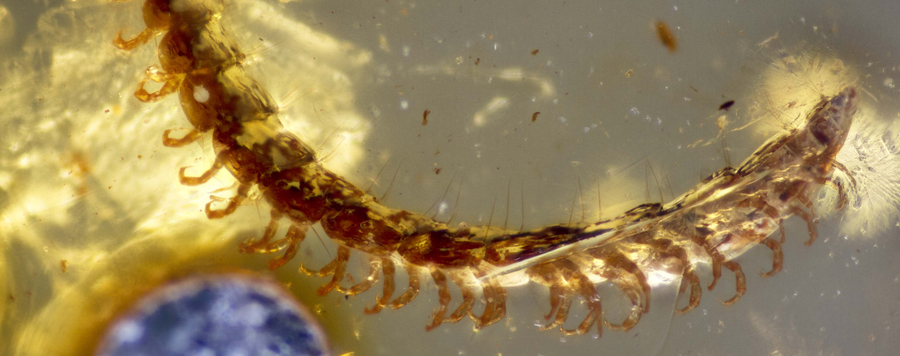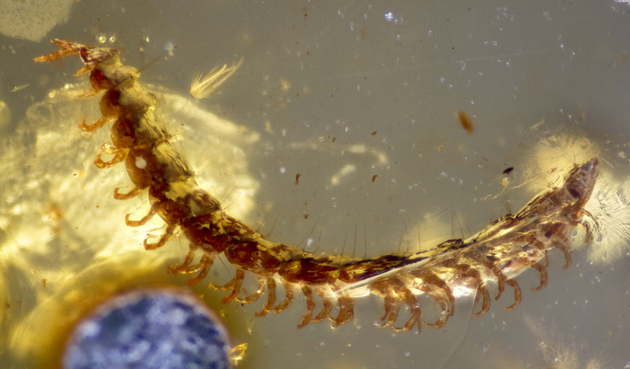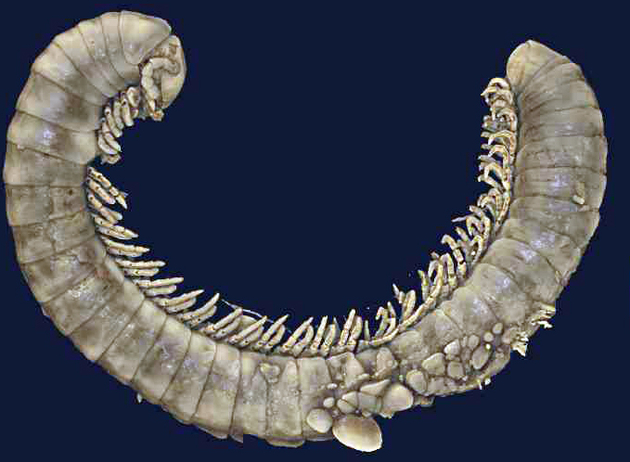Since the success of the "Jurassic Park" movies it is generally known that insects from the Age of the Dinosaurs can be exceptionally well preserved in amber, which is fossilized tree resin. Especially diverse is the animal fauna preserved in Cretaceous amber from Myanmar (Burma) near the Chinese border. In this almost 100-million-year-old amber spectacular discoveries have been made in the last few years such as dinosaur feathers, a complete dinosaur tail, unknown groups of spiders, as well as several now extinct groups of insects.
Only three species of millipedes were previously known from Burmese amber. This has changed thanks to a study conducted by Thomas Wesener and his PhD student Leif Moritz at the ZFMK and published in the journal "Check List".
The researchers studied and determined more than 450 millipedes preserved in Burmese amber and found species belonging to 13 of the 16 now-living main orders. For half of these orders, the studied amber contains the oldest known fossils. For their analysis the scientists employed micro-CT scan technology. Micro-CT scan technology uses X-rays from all directions to create a 3-D image of the specimen that can be virtually removed from the amber and digitally examined.
The studied amber is mostly from private collections, including the largest European collection, which is held by Patrick Müller from Käshofen. Many additional scientifically important specimens, probably thousands, are part of inaccessible private collections in China.
Over the next few years the discovered specimens will be carefully described and compared to extant species. This will make it possible to study the morphological changes that occurred in the last 100-million years, as well as to date important splits in the millipede Tree of Life. It is still unknown whether the local millipede diversity, e.g. in the southern Alps of Italy or on the island of Madagascar, is the result of evolutionary processes dating back 1, 10, or more than 100-million years.
The scientists have already observed that most of the Cretaceous millipedes found in the amber do not differ significantly from the living species found in Southeast Asia - an indication of the old age of the extant millipede lineagues. The diversity of the different orders, however, seems to have changed drastically. For example, during the Age of the Dinosaurs the so-called Colobognatha were very common. These unusual millipedes have heads that are extended to suck-up liquid food. Today less than 500 of the more than 12,000 known extant millipede species are colobognaths. However, this could be an artifact of the former way of life of Colobognatha. For example, freshly hatched, eight-legged juveniles are found in the amber - an indication that the animals lived and reproduced in the resin-producing trees.
Even before the arachnids and insects, and far ahead of the first vertebrates, the leaf-litter eating millipedes were the first animals to leave their mark on land more than 400-million-years ago. These early millipedes differ quite strongly from the ones living today – they were often much larger and many had very large eyes. The larger species of Arthropleura millipedes, for example, were up to 2 meters (6.5 feet) long and 50-80 centimeters (2-3 feet) wide – the largest arthropods to ever crawl our planet. Why these giants went extinct while the 16 recent orders survived is still unknown, partly because only a handful of mostly badly preserved fossils were known from the whole Mesozoic era (252-66-million years ago). Although it was always suspected that the 16 main groups of extant millipedes must be very old, a fossil record that supported this suspicion was missing.









